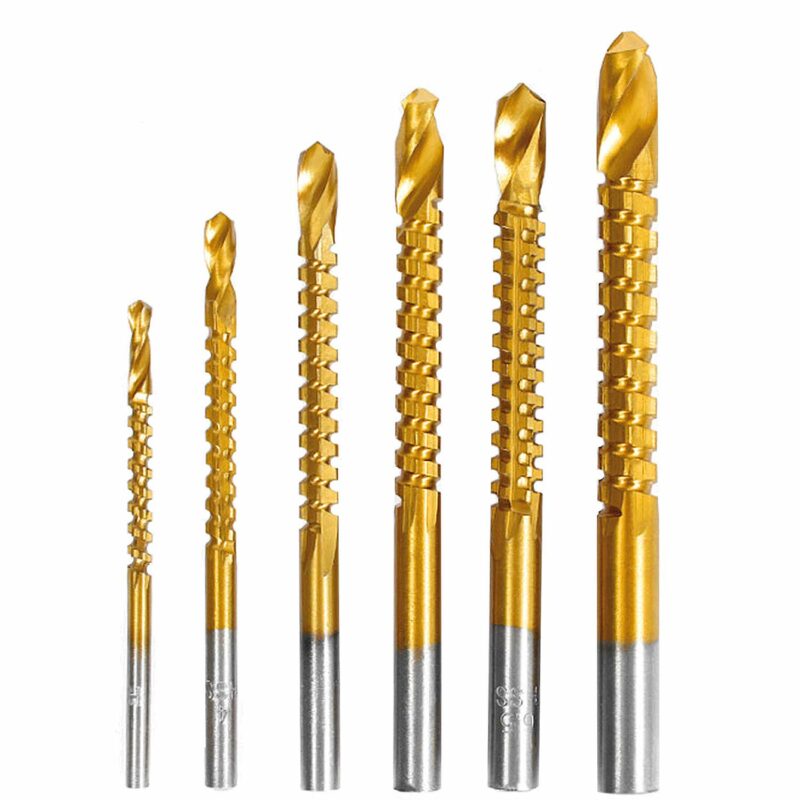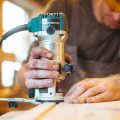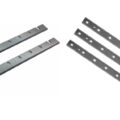Power Tools
Which of the 10 Types of Drill Bits and Their Uses is Best for You?
As a woodworker or tradesperson, you will certainly use drill bits in many, if not most, of your woodworking projects. For this reason, it is best to understand what they are all about and what purpose each type of drill bit serves.
These are engineered to create drilling holes in different materials, including plastic, metal, and wood. As pointed out, there are more than a few drill bit types, each serving a unique purpose for your projects.
Knowing the different types available on the market and the purpose each serves are important steps to finding the right drill bits for you.
Here are the ten types of drill bits and their uses:
Brad-Point Drill Bit
Used for: Making accurate holes in wood.
This drill bit’s main feature, which helps it make accurate and neat holes in wood, is the brand situated at the center. This brand helps keep the drill bit in place while the additional extensive grooves surrounding the bit easily remove material like dust and chips.
These drill bits are the best choice for boring precise holes in wood and establishing a clean exit point on wood. They are also perfect for drilling via cabinet doors for fitting features like handles. So, these drill bits are an excellent option for the cabinet makers here.
They also have a rubber stopper, which lets you preset the right hole depth.
Pocket Hole
Used for: Boring beveled holes for screws.
This is what I would call a specialty drill bit, and it is utilized for making angled holes for establishing wood joints. They should be compatible with the screws you’re using to facilitate a secure connection of the joints.
When employed properly, a pocket hole drill bit creates holes in wood at a precise angle to yield a specific hole that can hold a screw and screw head. This is just like toenailing the workpiece by hitting a nail at 45 degrees to fix two wood pieces together.
Twist Drill Bit
Used for: Typical drilling via light metal, plastic, and wood.
This drill bit is one that most DIYers carry in their toolbox. They are the most common type of drills since they are designed with versatility in mind. They serve several general purposes and can bore holes through plastic, light metals, and wood.
Additionally, they have a corkscrew build with broad channels that let the bit remove sawdust from the hole as it bores through, making it effortless to drill precise holes minus the worry of debris.
Driver Drill Bit
Used for: Loosening or tightening screws.
If you want to tighten or loosen fasteners, then this is the perfect choice. This bit comes in different options to fit a wide range of fasteners, including screws. For example, if you use a Robertson bit, you can remove or tighten it using a recess that’s compatible with the bit’s size.
You can use driver drill bits for DIY or professional scenes to complete numerous renovation and building projects. Additionally, you can utilize them to attach furniture and hang items like pictures.
Masonry Drill Bit
Used for: Making holes in masonry materials
As the name suggests, these drill bits are used to bore holes through masonry materials, including mortar, brick, and concrete. These are more common among professionals like electricians and plumbers.
Furthermore, masonry drill bits are designed for such demanding environments that require a lot of force to drill through.
Generally, they are used with rotary hammers or hammer drills. However, they don’t merely revolve the bit, they utilize a hammering action to push the drill bit through robust bricks. Because of this drilling technique and the toughness of the material, these bits wear fast.
River Drill Bits
Used for: Boring rivets into thin metal sheets.
River drill bits are specially designed to bore rivet holes in thin metal sheets.
Rivets are fasteners featuring a head on one side and a circular stem on the other end, known as the tail. By drilling holes through metal, rivets can be placed in the holes to fix two or more metals together permanently.
Drill Saw Bit
Used for drilling unorthodox holes in wood or metal.
Most of the time, woodworkers used a jigsaw to make random-shaped holes in wood or metal. Nonetheless, if you don’t have a jigsaw, then these bits are the ideal alternative.
The drill saw bits feature a sharp tip, designed to bore holes in metal and wood, though the shaft has a sharp edge that facilitates cutting horizontally through your workpiece to expand an already existing hole or bore a small irregular-shaped hole.
Spade Drill Bit
Used for: drilling huge-diameter holes through wood.
This is perfect for DIYers who spend plenty of time on different projects, especially if they require huge-diameter holes through lumber. Besides, electricians usually use spade drill bits to bore holes for power cables.
They sport a flat cutting blade and pointed center that aids in positioning this bit for added precision.
Annular Cutter Drill Bit
Used for: Boring holes into metal but keeping the core intact.
Annular drill bits are just like a hole saw drill bits since they are both built to make a neat, circular hole through the workpiece, but they ensure the core remains intact after boring the hole. All the same, these drill bits are tailored for boring into metal as opposed to wood.
Also, they deliver precise, clean holes and let you remove the workpiece’s core.
Installer Drill Bit
Used for: Perfect for installing wiring
Finally, are these drill bits usually used by electricians and technicians to install different gear with wiring? These drill bits can bore up to 18 inches, which is why they can penetrate through floors and walls.
You can utilize them to bore holes through light masonry workpieces, plaster, and wood. Also, they have a hole at the tip, where you can fix a cable and re-attach the bit to pass the cable via the floor or wall.
Why You Should Trust Us
At Woodworking Tool Guide, we know one size doesn’t fit all! We cater to every woodworker, from beginner to pro, with insights and recommendations tailored to your skill level, project needs, and budget. We take the guesswork out of choosing the right tools, whether you’re tackling your first crafting a masterpiece for the ages. So grab your chisel, join our community, and let’s build something amazing together!
Woodworking Tool Guide wasn’t just born, it sprouted from a seed of passion for the craft. What started as a joyful exploration blossomed into a trusted online haven for fellow enthusiasts like you. We pour our love into meticulously chosen review selections, meticulous hands-on testing, and lab-backed insights, all to empower you with reliable, comprehensive information you can build on. So, grab your tools, trust our guidance, and let’s build something beautiful together!
Passion-Driven Expertise
Our journey started with a shared love for woodworking. The team behind the Woodworking Tool Guide is comprised of individuals who are not just writers but passionate woodworkers themselves. This shared enthusiasm ensures that our content is crafted with a deep understanding of the craft and an authentic appreciation for quality tools.
Top Tool Guides Online
Woodworking Tool Guide has rapidly ascended to become one of the premier online destinations for tool guidance. Our commitment to excellence and the accuracy of our information has positioned us as a reliable source for both beginners and seasoned woodworkers seeking trustworthy advice on the best tools for their projects.
User-Centric Approach
Our content caters to every woodworker, from rookies just starting out to seasoned pros tackling intricate projects. We tailor our insights and recommendations to your skill level, project needs, and budget, ensuring you find the perfect tools to match your unique woodworking journey. So step into your workshop, grab your tool belt, and let Woodworking Tool Guide be your trusted companion as you craft your masterpieces.
Continuous Support and Innovation
Woodworking is an ever-evolving craft, and so is our commitment to supporting you. We are dedicated to bringing you the latest information on woodworking tools, techniques, and trends. Our team is actively working to expand our content and bring you more valuable insights, ensuring that you stay well-informed in your woodworking adventure.
Hands-On Experience
Ditch the endless research rabbit hole! At Woodworking Tool Guide, we believe in actionable advice, not armchair analysis. We get our hands dirty, putting every tool through its paces in real-world woodworking scenarios. Whether it’s the precision of a table saw, the versatility of a router, or the tactile satisfaction of a handplane, we test for performance, durability, and user-friendliness. No more sifting through dry specs – we deliver practical insights you can trust to transform your woodworking dreams into reality.
Woodworking Tool Guide isn’t just a review site, it’s your trusted companion on the sawdust-filled path to woodworking mastery. Our expert team, led by veteran David Jones, meticulously tests and explains tools in terms you understand. We cut through the jargon, bias, and confusion with real-world insights and honest evaluations. Join our passionate community, where decades of experience, cutting-edge knowledge, and shared love for the craft come together to guide you every step of the way. So grab your chisel, buckle up, and let’s embark on this exciting woodworking adventure, together!
Conclusion
As you can see, there is plenty the industry can offer in terms of drill bits. The perfect drill bit for you will depend on your niche and your needs. The best option would be investing in a drill bit kit. This kit will include several types of drill bits, which will come in handy in different scenarios.






